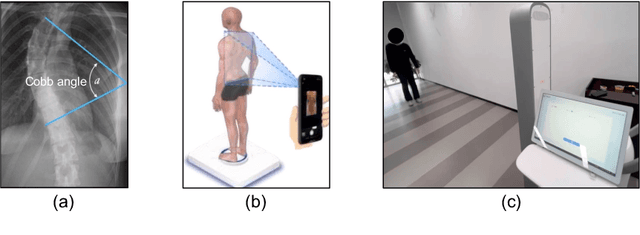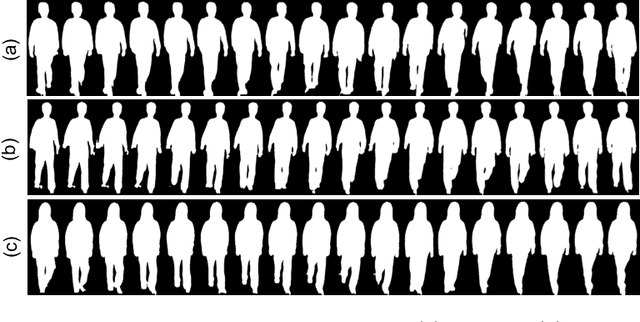Zizhao Peng
Gait Patterns as Biomarkers: A Video-Based Approach for Classifying Scoliosis
Jul 09, 2024



Abstract:Scoliosis poses significant diagnostic challenges, particularly in adolescents, where early detection is crucial for effective treatment. Traditional diagnostic and follow-up methods, which rely on physical examinations and radiography, face limitations due to the need for clinical expertise and the risk of radiation exposure, thus restricting their use for widespread early screening. In response, we introduce a novel, video-based, non-invasive method for scoliosis classification using gait analysis, which circumvents these limitations. This study presents Scoliosis1K, the first large-scale dataset tailored for video-based scoliosis classification, encompassing over one thousand adolescents. Leveraging this dataset, we developed ScoNet, an initial model that encountered challenges in dealing with the complexities of real-world data. This led to the creation of ScoNet-MT, an enhanced model incorporating multi-task learning, which exhibits promising diagnostic accuracy for application purposes. Our findings demonstrate that gait can be a non-invasive biomarker for scoliosis, revolutionizing screening practices with deep learning and setting a precedent for non-invasive diagnostic methodologies. The dataset and code are publicly available at https://zhouzi180.github.io/Scoliosis1K/.
 Add to Chrome
Add to Chrome Add to Firefox
Add to Firefox Add to Edge
Add to Edge